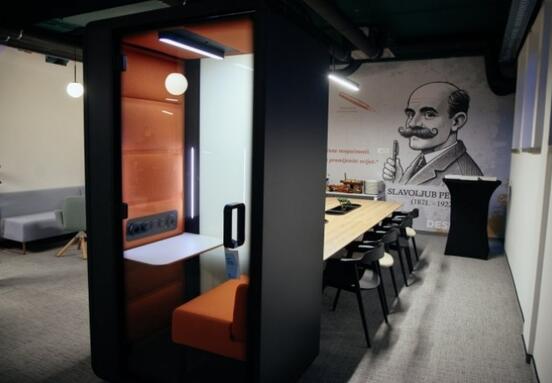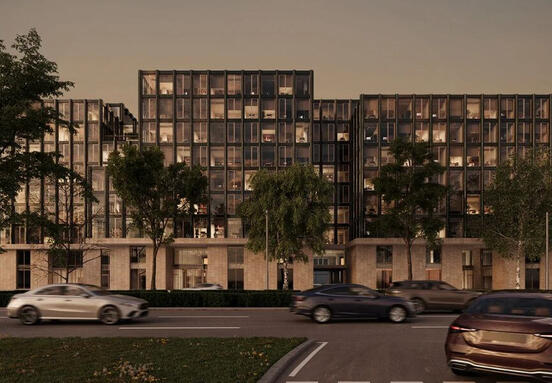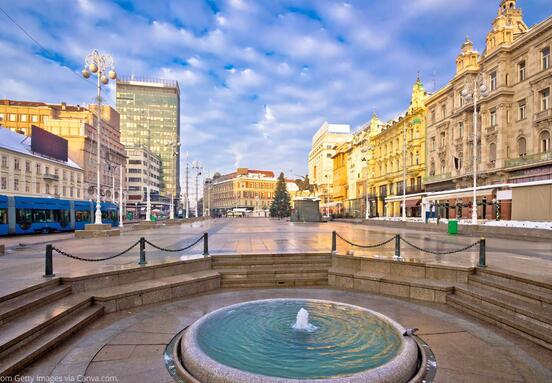Croatia and Serbia have a reputation for bureaucracy and unpredictability that can make the development processes in the two SEE capitals expensive and time consuming. Further, the Zagreb and Belgrade office markets are regarded as suffering from a lack of visibility and liquidity and an obvious exit strategy for developers, as international investors have been reluctant to enter the markets due to economic, political and procedural concerns.
The Zagreb office market is characterized by a downward pressure on rents and an increase in vacancy as companies have downsized in the economic downturn. Domestic consumer demand and the labour market are weak as unemployment is close to 20 percent. Total modern percent office stock in Zagreb stands at around 1.25 million sqm with a limited pipeline and a vacancy rate of 17 percent according to JLL. Headline rents have been falling since 2007 and now stand at €12-15 per sqm per month according to JLL.
However a modest economic recovery for 2014 is expected after five years of recession. Further, Filip Vucagic, Head of Investment & Valuation at Colliers Croatia argues that the delivery of new high quality office product with competitive terms would be attractive and enjoy good occupancy levels. In this way the VMD office project, currently under construction, is said to be letting well.
GTC, an experienced SEE developer, has an office development site in Zagreb with a location permit for two office buildings of approximately 10,000 sqm of GLA each. However the company is reluctant to begin construction in the current economic and office market environment. “Since GTC’s strategy is focused on retail and office it is more likely that we would first proceed with the Zagreb site. However, this is tied to our ability to secure an adequate amount of prelets as well as financing, both of which remain challenging in the current market. Because of the current environment we are also considering acquiring existing assets since we can achieve similar returns without have to go through site assembly, zoning, permitting, construction etc. Each of which brings a risk along with it,” said Arn Willems, Country Manager of GTC Croatia.
However the conventional wisdom is that developers need to forward plan in anticipation of an economic recovery. “Developers need to plan 3-5 years in advance and therefore should now start planning for the future,” commented Tomislav Greguric, MD of Zagreb-based Renova Property Consultants.
In contrast to Zagreb, Belgrade has almost zero vacancy and low levels of stock. EU candidate status is also benefiting Serbia from a trade and economic perspective. However, although negotiations over Serbia’s EU accession are supporting improvements in sentiment towards Serbia the country continues to struggle with high unemployment of above 20 percent. Although economic growth estimates for 2014 are predicted to be 1.9 percent.
“When the crises hit this part of Europe, project financing stopped and very few new developments entered the market. Unlike the region, Serbia has not seen overdevelopment but rather development stopped at the right moment, giving more opportunity for project financing in the upcoming period. The banks are open to financing new development but the level of development needed means that banks must syndicate to reach the development pricing,” said Uros Grujic from JLL SEE.
Office supply in Belgrade remains low, even by CEE standards, at a little over 600,000 sqm. Only 50 percent of this is Class A according to JLL. The latest new addition to the market was the 5,200 sqm Danube Business Center by the Austrian BOP Immo, which has been letting well. With supply remaining limited, vacancy has continued to fall. Headline rents for prime buildings remained stable at €14-16 per sqm per month according to JLL.
Pipeline is very limited and CBRE argue that the almost complete absence of projects and solid demand will result in a lack of space for potential tenants. Only 3,200 sqm of new supply is expected to complete in 2014 with the delivery of the Old Mill office and hotel complex located in New Belgrade where 90 percent of Belgrade office stock is located. The renovation project by the Austrian Savavia Group will deliver the 240 room Radisson Blu Old Mill Hotel in addition to office space that has received financing from the EBRD.
Only two major office projects are in the pipeline, GTC are due to start construction of the first 10,000 sqm phase of a 27,000 sqm development. In another mixed-use development, Immorent are developing the Sirius office and hotel project, also located in new Belgrade.
In a major development for the city, the Dubai-based Eagle Hills have released plans for the Belgrade Waterfront project that is planned to deliver commercial, retail, hospitality and residential space. The complex will consist of 60 percent built area including a 220 metre tower and 40 percent open space. Construction of the first phase is due to commence this year. The project is being undertaken against the background of a trade agreement between the Serbia and Abu Dhabi governments. “Available office space in quality buildings is close to zero in Belgrade and this projects draws attention to the city,” said Diana Klott, Managing Director of the Belgrade-based consultants NAI-atrium.
Fabijan Matosevic, Co-Director of Victorios investment managers, argues that the development process needs to be simplified in addition to the establishment of a more reliable judicial process. “The EU will lead to an improvement of the judicial and legal system in Serbia, which will improve the local investment climate and hence benefit the investment market in the long term. From an international perspective Serbia still lacks much of the institutional and judicial transparency which is crucial to attract investors and developers,” he said.
From a more optimistic perspective, Uros Grujic comments that there will be plenty of opportunities once Serbia becomes more EU friendly and once foreign investors start to feel comfortable with Serbia. “Figures for vacancy rates, take-up, limited pipeline and the number of people within Belgrade will all contribute to upcoming investments. Further, Belgrade is the largest and most populated city within the region and geographically ideally positioned,” he concluded.
Source: Gary J. Morrell
Publisher: Gary J. Morrell






